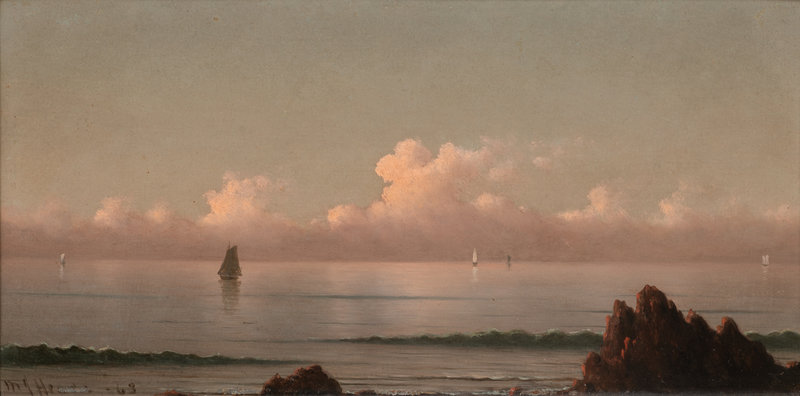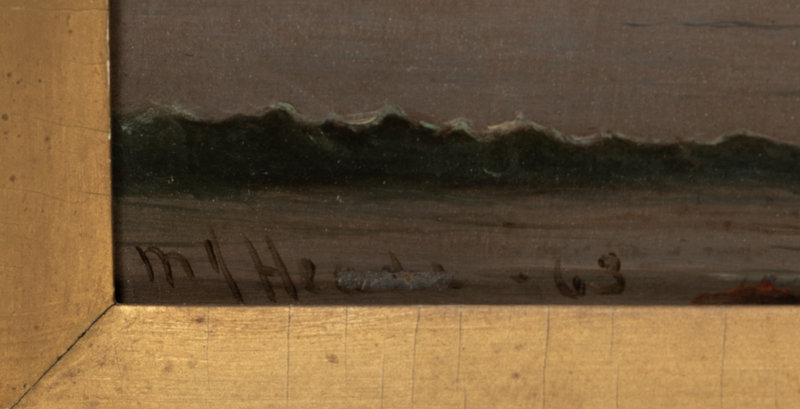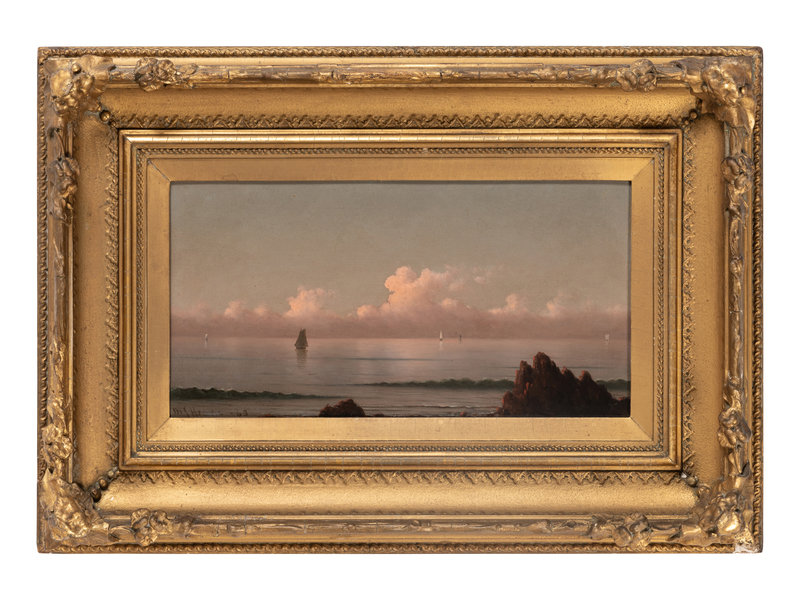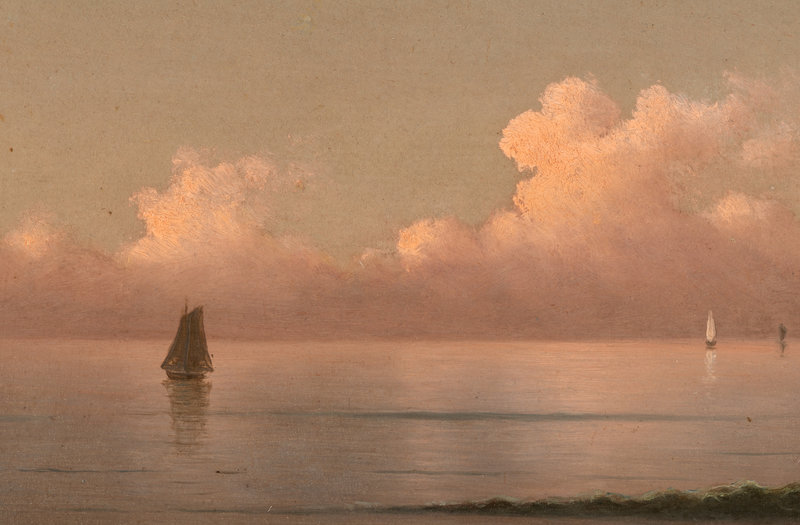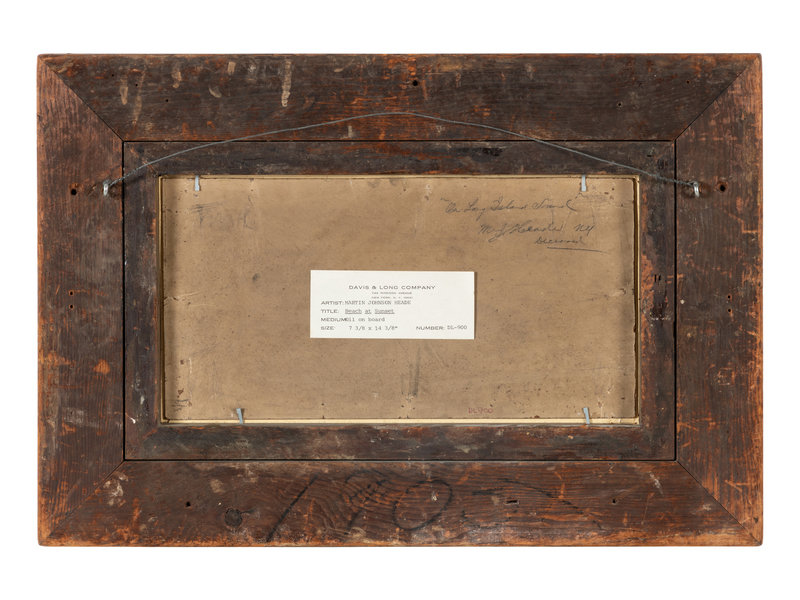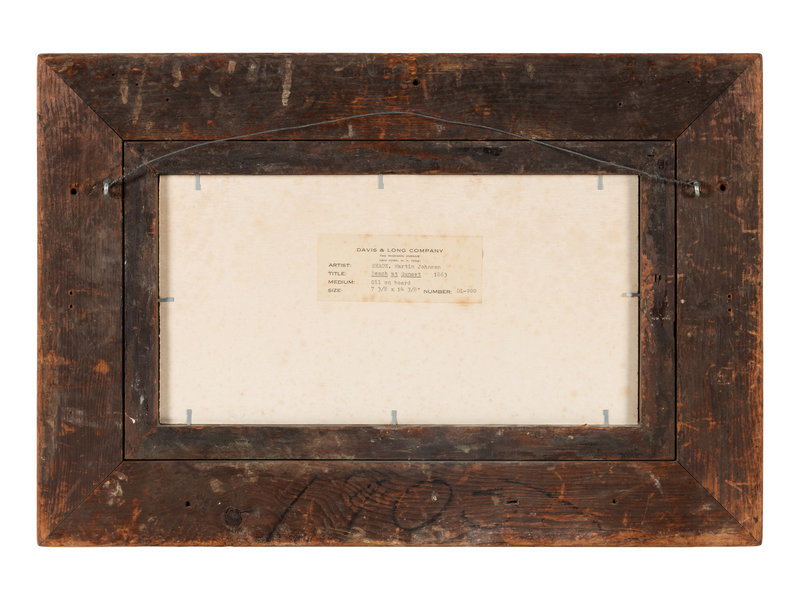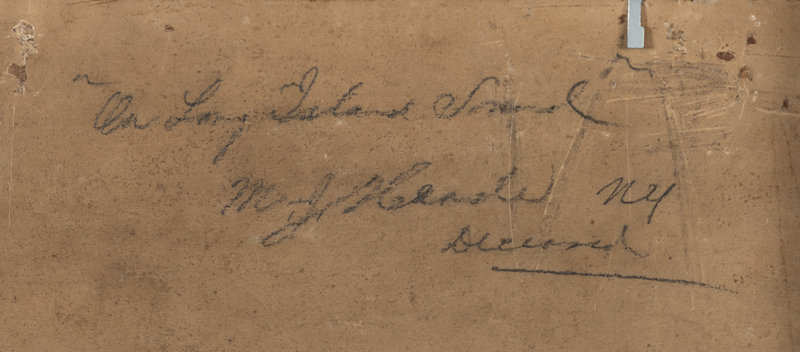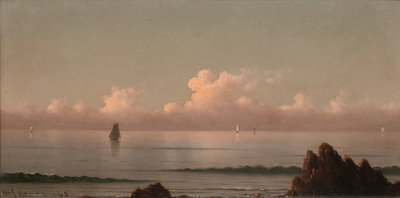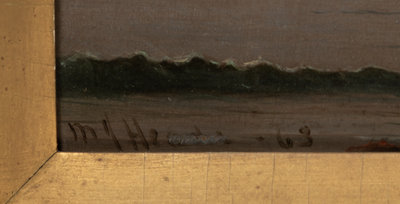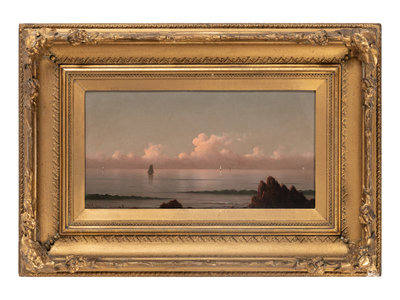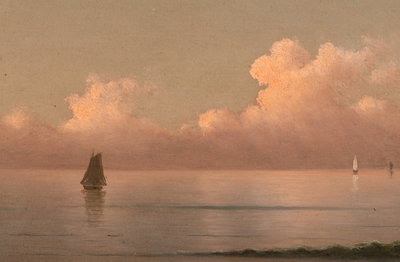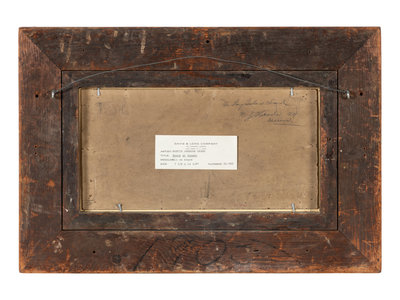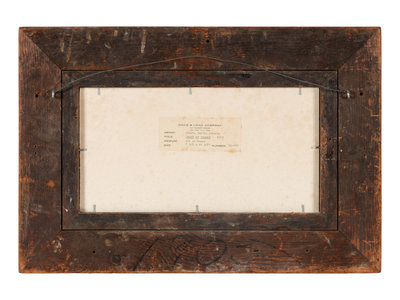Condition Report
Contact Information
Auction Specialists
Lot 45
Martin Johnson Heade
(American, 1819-1904)
Calm Summer Day, 1863
Sale 1283 - Canvas & Clay: The Collection of Judith and Philip Sieg, Bellefonte, Pennsylvania
Oct 26, 2023
10:00AM ET
Live / New York
Own a similar item?
Estimate
$150,000 -
250,000
Price Realized
$63,000
Sold prices are inclusive of Buyer’s Premium
Lot Description
Martin Johnson Heade
signed MJ Heade and dated (lower left); inscribed On Long Island Sound/MJ Heade NY/Deceased (on the reverse)
7 3/8 x 14 3/8 inches.
The Collection of Philip and Judith Sieg, Bellefonte, Pennsylvania
(American, 1819-1904)
Calm Summer Day, 1863
oil on board
signed MJ Heade and dated (lower left); inscribed On Long Island Sound/MJ Heade NY/Deceased (on the reverse)
7 3/8 x 14 3/8 inches.
The Collection of Philip and Judith Sieg, Bellefonte, Pennsylvania
